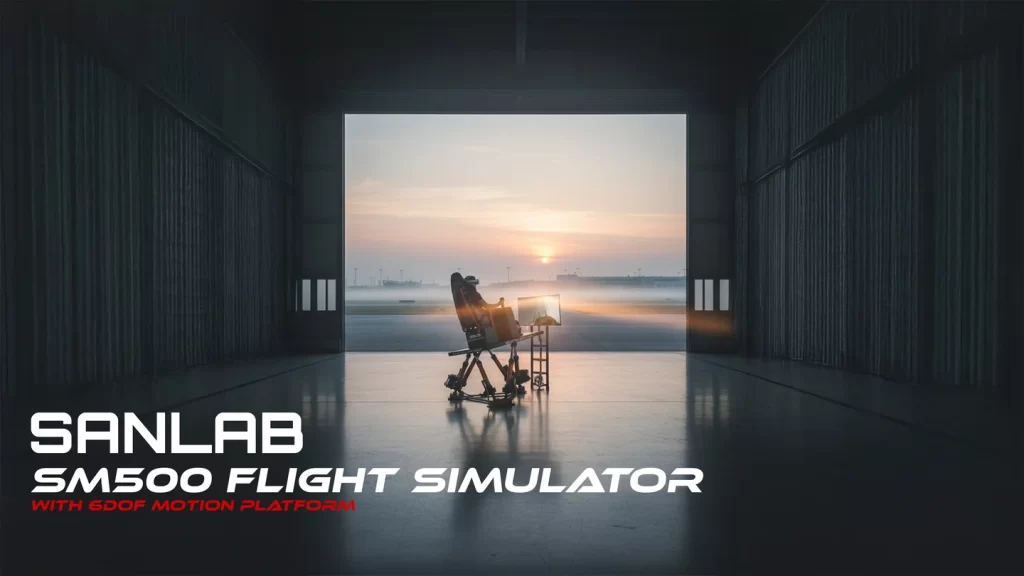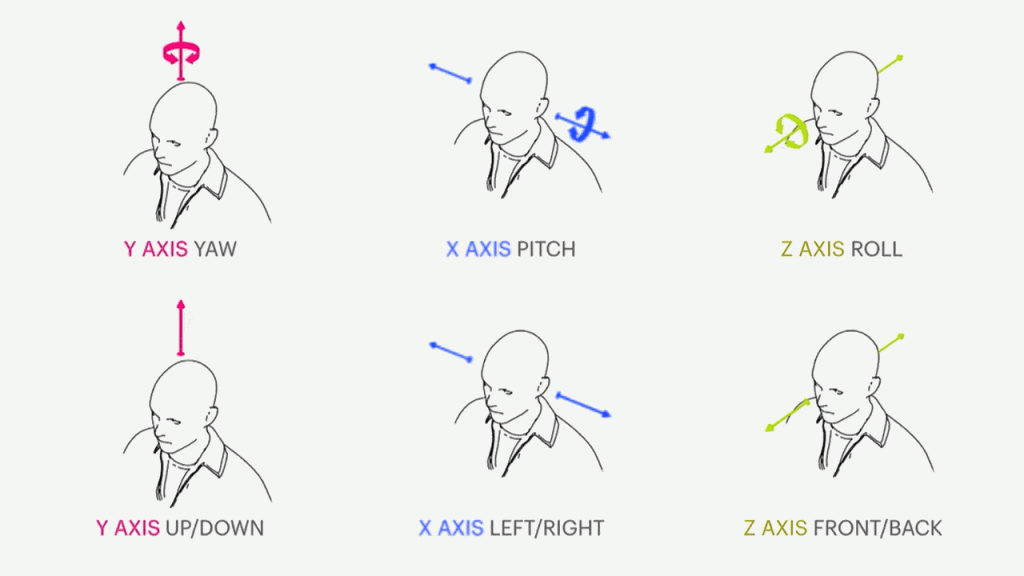Flight Training Simulator Tech & Standards

Flight Training Simulator Engineering Precision in Modern Pilot Training Experience the next generation of Flight Training Simulators powered by 6DoF motion technology. The SANLAB SM500 combines precision engineering and immersive flight dynamics to transform how pilots train, analyze, and master every maneuver. Home Introduction: The Evolution and Importance of Flight Training Simulators In the past two decades, the Flight Training Simulator has evolved from a supplementary training tool into a core component of professional aviation education. Airlines, defense programs, and aviation academies now rely on simulator-based training not only to reduce operational costs but also to increase flight safety, standardization, and skill reproducibility. Modern pilot training demands more than memorizing checklists—it requires experiential learning through immersive, data-driven simulation. From procedural training to complex upset recovery scenarios, Flight Training Simulators deliver repeatable, measurable, and risk-free environments that mirror real-world flight conditions. Fundamentals: Standards and Global Framework Every simulator’s fidelity and function are defined within established international frameworks. FAA Part 60 classifies devices as Full Flight Simulators (FFS) or Flight Training Devices (FTD), ranging from Level A to D and Level 4 to 7 respectively. EASA CS-FSTD(A) mirrors this structure in Europe, while ICAO Doc 9625 harmonizes definitions and performance metrics worldwide. These documents don’t simply certify hardware—they provide a common technical language for comparing training systems. A Pilot Training Flight Simulator used in an academy doesn’t need to be certified as a Level D FFS to deliver quality instruction. What matters is matching the fidelity level to the training objective—a principle emphasized in modern Competency-Based Training and Assessment (CBTA). Types and Levels: Understanding the Flight Simulator Spectrum Type Designation Description Typical Use FFS – Full Flight Simulator Level A–D Includes full motion, high-fidelity visuals, and certified flight dynamics Airline, Type-Rating, Recurrent FTD – Flight Training Device Level 4–7 Fixed-base or motion-enabled device for procedural and systems training Flight schools, academies, defense training AATD / BATD – Basic or advanced desktop simulators Ground training, IFR familiarization FNPT I/II – EASA procedural trainers University and civil flight schools While FFS platforms dominate airline training, FTD and engineering simulators are increasingly valued for their flexibility, affordability, and customization potential. This is precisely where SANLAB SM500 Flight Simulator positions itself—bridging research-grade motion technology with professional training capability. Technology Core: Motion, Visual, and Software Synergy At the heart of any modern Flight Training Simulator lies the integration of motion, visuals, and software fidelity. Motion Systems (6DOF) The six-degree-of-freedom (6DOF) motion platform—pitch, roll, yaw, heave, sway, and surge—delivers the kinesthetic cues essential for pilot perception and situational awareness. SANLAB SM500 employs a high-performance 6DOF motion platform capable of handling up to 500 kg payload with 300 mm actuator stroke, allowing precise replication of aerodynamic forces and turbulence dynamics. Such responsiveness makes it ideal for UPRT (Upset Prevention and Recovery Training) and complex maneuver simulations. Visual and Avionics Integration High-definition projection and dome-based visual systems create immersion through wide field-of-view environments. Integration with software such as Prepar3D, DCS, or X-Plane ensures realistic flight dynamics, weather modeling, and avionics behavior. Data and Analytics Each Flight Training simulator session can log detailed telemetry: control inputs, motion feedback, and performance metrics. This quantitative feedback loop supports objective pilot assessment and recurrent training optimization. Training Methodologies: From CBTA to UPRT Contemporary pilot training has shifted from hours-based models to competency-based assessment frameworks. A Flight Training Simulator enables measurable evaluation across the following methodologies: • CBTA (Competency-Based Training and Assessment): Measures decision-making, workload management, and situational awareness. • UPRT (Upset Prevention and Recovery Training): Provides safe exposure to aerodynamic stalls and unusual attitudes. • MCC (Multi-Crew Cooperation): Builds teamwork and CRM (Crew Resource Management) through multi-pilot scenarios. • Recurrent Training: Enables pilots to maintain proficiency under standardized and auditable conditions. A motion-based system like the SM500 is particularly suited for UPRT and MCC modules, where sensory feedback is critical for effective learning. Case Study: SANLAB SM500 Flight Training Simulator — Bridging Engineering and Training Developed by SANLAB, a leading Turkish simulation and mechatronics company, the SM500 Flight Simulator exemplifies how engineering precision meets professional pilot training needs. Rather than replicating a specific aircraft type, the SM500 provides a modular motion and control platform adaptable for both training and research purposes. Key Engineering Highlights: • 6DOF electromechanical motion with advanced control algorithms for smooth, precise movement. • Payload capacity 500 kg, supporting full-scale cockpits, avionics modules, or R&D test rigs. • High dynamic response for turbulence, G-force, and ground reaction simulation. • Compatibility with major flight simulation engines (Prepar3D, DCS World, etc.). • Designed for both training centers and aerospace research laboratories. In essence, the SM500 stands between the procedural fidelity of an FTD and the immersive realism of a Full Flight Training Simulator, making it a cost-efficient yet technically advanced option for academies and defense institutions alike. Impact Areas: Safety, Cost-Effectiveness, and Sustainability • Safety Enhancement Simulators allow instructors to replicate hazardous scenarios—engine failures, weather upsets, or system malfunctions—without risking aircraft or personnel. This hands-on exposure translates directly into safer real-world operations. • Cost Efficiency By eliminating the expenses of fuel, maintenance, and airspace coordination, organizations reduce training costs by up to 60 %. The Pilot Training Flight Simulator thus becomes both a financial and logistical enabler. • Sustainability As aviation faces increasing environmental scrutiny, simulation-based training significantly cuts CO₂ emissions, supporting the industry’s decarbonization goals. • Data-Driven Evaluation With every training session logged digitally, instructors gain insights into pilot competencies and weaknesses, enabling evidence-based curriculum improvements. Conclusion & Future Trends The next decade of aviation training will rely heavily on adaptive simulation environments that integrate AI-based performance analytics, VR/AR visual systems, and modular motion architectures. As regulatory bodies continue to refine the relationship between simulator fidelity and training outcomes, devices like the SANLAB SM500 Flight Simulator will play a pivotal role—offering engineering-grade precision, operational flexibility, and a pathway toward sustainable, data-driven flight training. FAQ Section What is a Flight Training Simulator? A Flight Training Simulator is a device that replicates real-world flight conditions for pilot training, certification, and research without the
6DoF (Six Degrees of Freedom) in Robotics

What Is 6DoF (Six Degrees of Freedom) in Robotics? Discover the power of 6DoF (Six Degrees of Freedom) in robotics, and learn how motion across six axes transforms modern automation, simulation, and engineering design. Home Understanding the Concept of Six Degrees of Freedom When we talk about 6DoF, or Six Degrees of Freedom, we’re describing a system’s ability to move in all possible directions within three-dimensional space. A robotic arm, a flight simulator, or a motion platform that supports 6DoF can perform movements along and around all three spatial axes (X, Y, and Z), combining both translation and rotation. Translational and Rotational Movements Translational: Moving forward/backward (surge), up/down (heave), and left/right (sway). Rotational: Tilting (pitch), turning (yaw), and rolling (roll). Together, these six motions allow a robot or platform to precisely replicate human or environmental motion, resulting in ultra-realistic simulations and more dynamic control over physical systems. Why It Matters In robotics and mechatronics, 6DoF isn’t just a number; it’s the foundation of true spatial freedom. Whether you’re stabilizing a drone in flight or simulating vehicle dynamics in a training setup, 6DoF motion enables realistic, physically accurate movement that enhances both performance and user immersion. How 6DoF Works in Robotics 6DoF systems are built on mechanical architectures that allow independent yet coordinated movement across all six axes. These are often powered by actuators, servo motors, and sensors, integrated through advanced control algorithms. Forward and Inverse Kinematics Forward Kinematics (FK) determines the end-effector’s position based on given joint angles. Inverse Kinematics (IK) calculates the joint angles required to achieve a target position. Both are critical for achieving smooth, collision-free motion in 6DoF robotic systems. Control Systems and Real-Time Feedback Modern control systems rely on a mix of PID controllers, model-based planning, and sensor fusion. This ensures that motion is not only accurate but also safe and responsive, even under variable load conditions. Six Degrees of Freedom in Real-World Applications The versatility of 6DoF technology has led to its widespread use across multiple industries. Simulation & Training Flight simulators, vehicle training systems, and industrial safety simulators rely heavily on 6DoF motion platforms to replicate real physical sensations. Industrial Automation 6DoF robotic arms handle assembly, inspection, and packaging with unmatched precision, enabling more flexible automation in manufacturing. Research & Defense 6DoF setups allow researchers to test dynamics, vibration, and stability in controlled yet realistic conditions — from vehicle motion to aerospace systems. Design Challenges and Engineering Considerations Building a precise 6DoF platform is a complex engineering challenge that combines mechanical design, control theory, and real-time software integration. Key Engineering Challenges Maintaining structural stiffness while allowing full motion freedom Reducing backlash, vibration, and latency Ensuring precise sensor calibration Managing payload capacity with minimal power loss These constraints shape every aspect of 6DoF system design, from frame geometry to actuator selection. From Motion Theory to Real Systems After understanding the principles of Six Degrees of Freedom, it becomes clear how these concepts are shaping next-generation robotics and motion systems. 6DoF-based simulators are now used in industrial training, vehicle testing, and advanced research, bridging the gap between theoretical design and real-world performance. This is where advanced motion technology providers step in — engineering systems that combine precision, realism, and intelligent control. Explore Our 6DoF Motion Solutions Below is a quick look at some 6DoF motion systems designed for various professional and educational applications. 3D diagram of 6DoF (Six Degrees of Freedom) illustrating. 6 Oct News MotionBridge | Where Digital Scenes and Real World World Physics Converge SANLAB’s custom 6DOF emulator integrates motion platforms with Unreal Engine for precise real-time simulation feedback. Read More 29 Jul News SANLAB x techUK: Membership & Award Nomination SANLAB joined techUK; Co-founder Evren Emre was nominated for the People Award at techUK Annual Dinner 2025. Read More 29 Jul News Colorado Boulder MBA Group SANLAB hosted University of Colorado Boulder MBA group for a session on entrepreneurship, business, and technology. Read More 29 Jul News PennState MBA Students SANLAB hosted Penn State MBA students for discussions on robotics, training technologies and innovation in tech sectors. Read More 29 Jul News Unreal Engine Integration SANLAB’s custom 6DOF emulator integrates motion platforms with Unreal Engine for precise real-time simulation feedback. Read More 29 Jul News SANLAB to Participate in ERF 2025 in Stuttgart SANLAB to participate in ERF 2025, showcasing Turkish innovation in robotics and AI for a stronger Europe. Read More SMOTION50 – E6D Payload: 50 KG Ideal for light payloads, this compact 6DOF motion platform delivers responsive performance in tight spaces, making it suitable for small simulators and lab environments. Read More SMOTION500 – E6D Payload: 500 KG With 500 kg capacity, this platform supports professional-grade simulators and offers high-fidelity motion response for automotive, maritime, or research environments. Read More SMOTION1500 – E6D Payload: 1500 KG Built for heavy-duty setups, this platform enables realistic motion for vehicle testing, immersive training, and system integration with large payload requirements. Read More SMOTION3000 – E6D Payload: 3000 KG This platform offers enhanced stability and precision for high-mass applications such as cockpit mockups, structural response testing, and system prototyping. Read More SMOTION6000 – E6D Payload: 6000 KG Ideal for ultra-heavy payloads, this platform supports highly specialized use cases, including industrial-grade simulators, stress testing, and advanced research rigs. Read More SMOTION14000 – E6D Payload: 14000 KG Our highest-capacity motion platform, purpose-built for massive payloads, delivering full 6DOF control for military-grade, research-intensive, or structural simulation tasks. Read More Conclusion: The Power of Six Degrees of Freedom 6DoF (Six Degrees of Freedom) defines how motion becomes reality in robotics, simulation, and automation. If you want to see how 6DoF motion technology can elevate your training, research, or industrial applications Explore our motion platforms and discover freedom in every direction. It’s what allows systems to move like humans, respond like machines, and perform beyond limitations.
